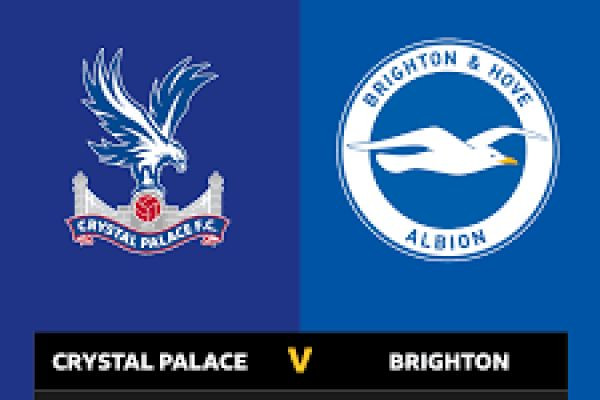The fixture between Crystal Palace FC and Brighton & Hove Albion transcends mere Premier League points. Dubbed the A23 Derby (or M23 Derby), this rivalry is uniquely fierce despite the 45-mile distance separating Selhurst Park and the Amex Stadium. Born from historical cup clashes and intense 1970s managerial duels, the modern iteration pits the raw, atmospheric intensity of South London against the structured, technical ambition of the South Coast.
Tactically, this match represents a pure conflict: Crystal Palace's vertical, counter-attacking pragmatism against Brighton's patient, positional, and high-possession philosophy.
The Cultural Crucible: The A23 Derby
The passion surrounding this derby often baffles outsiders, but for the fans, it is the calendar’s most important event. The rivalry is based less on proximity and more on competitive enmity and psychological warfare, creating an electric atmosphere that frequently sees the tactical blueprint thrown out the window in favor of raw emotion and aggression. This cultural intensity feeds into the technical outcome, as the high-stakes environment often forces mistakes from the more complex, possession-based side (Brighton) while energizing the direct, transitional side (Palace).
Crystal Palace typically thrives in an environment where they cede possession, utilizing a disciplined $4-3-3$ or $4-2-3-1$ formation. Their strategy is built on defensive solidity, quick ball recovery, and immediate vertical progression.
Palace’s Strategic Pillars:
Defensive Discipline: The back four and deep midfielders maintain a compact, mid-to-low block, forcing opponents like Brighton to play in front of them. Their goal is not to win the ball high, but to invite pressure and force sideways passes.
Wingers and Speed: Palace’s primary attacking weapons are their wide players and inside forwards (e.g., Eberechi Eze, Michael Olise, or a key striker). They use explosive speed on the break to exploit the vast space left behind by Brighton's high defensive line and advanced full-backs. The moment the ball is won, it must go forward quickly.
Set-Piece Threat: Given their height and physicality, Palace often sees set-pieces as a vital opportunity. Against a smaller, more technical Brighton side, corners and free-kicks become high-leverage scoring chances.
Palace’s vulnerability lies in the periods when they are forced to initiate possession. If Brighton defends expertly, Palace lacks the central creativity and positional movement required to break down a low block systematically.
Brighton & Hove Albion: Positional Play and Control
Brighton operates under the core principle of positional play, maintaining a philosophy of dominating possession, often using a flexible $4-2-3-1$ or $3-4-2-1$ shape that utilizes intricate passing patterns.
Brighton’s Strategic Mandate:
High Possession and Build-Up: The strategy demands that the goalkeeper and centre-backs initiate the build-up, drawing in the opposition press to create space elsewhere. The team relies on numerical superiority in the first two phases of the pitch, with players constantly rotating to create passing angles.
Full-Back Inversion: Brighton’s full-backs often operate centrally (inverting) or extremely high, pushing the wingers inside to overload the half-spaces. This intricate movement is designed to destabilize the opposing midfield block and create shooting lanes.
The High Line: The team employs a very high defensive line, designed to compress the pitch and facilitate their immediate counter-press when possession is lost.
Brighton’s critical risk is directly related to their high line. A single inaccurate pass in midfield or a well-timed long ball over the top can immediately expose their goalkeeper and centre-backs to Palace’s rapid forwards.
Key Decisive Tactical Conflicts
The match outcome will hinge on three decisive duels:
The Palace Counter vs. The Brighton Line: This is the most critical conflict. If Palace can bypass Brighton's initial counter-press and release their runners (Eze, Olise) against the two central defenders with space to run into, they will score. Brighton's defensive midfielder must protect the centre-backs and disrupt these passes at the source.
The Midfield Transition War: The battle for the "second ball" will be fierce. Palace’s central players (e.g., Lerma) must be relentless in breaking up Brighton’s intricate passing sequences in the middle third. If Brighton’s midfield (e.g., Groß, Gilmour) is allowed to settle, their control will become overwhelming; if they are hurried, they will commit the errors Palace craves.
Pressure on the Goalkeeper: Brighton's insistence on short build-up play, even under pressure, presents a huge opportunity for Palace. The Eagles will selectively engage in a high press, aiming to force a long clearance or a turnover from the goalkeeper or a deep centre-back, turning the technical battle into a high-leverage defensive error.
Conclusion
This A23 Derby is less a game of chess and more a test of wills, where one side (Brighton) brings the elegant chessboard, and the other (Palace) brings the sledgehammer. The result typically comes down to efficiency. Brighton will dominate possession (likely $65\%$+) and territory, but Palace will win the moments. If Brighton’s center-backs and goalkeeper navigate the inevitable pressing traps flawlessly, they will likely grind out a narrow win. However, if Palace’s pacy attackers convert one or two of the inevitable counter-attacking chances created by Brighton’s high line, the emotional intensity of Selhurst Park often gives the Eagles the edge.








